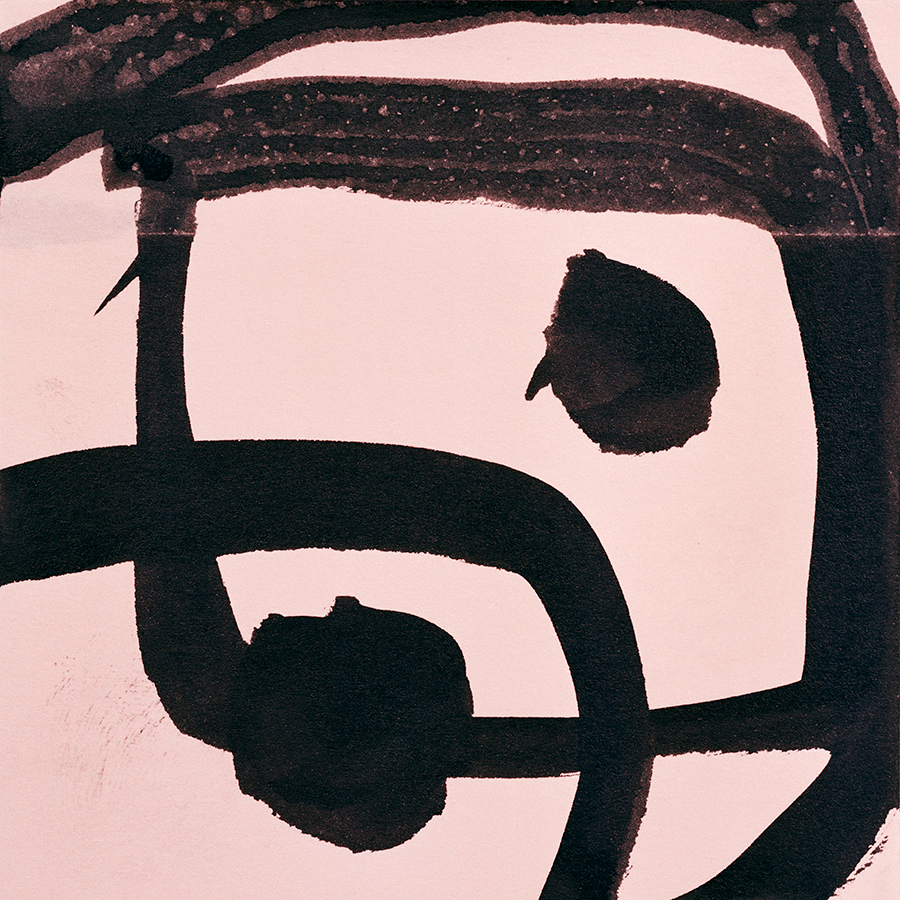Alexandre Estrela and João Maria Gusmão’s Cinematic Dance with Light
At Travesía Cuatro, Mexico City, the two artists illuminate the three-storey gallery space with projected video animations and magic lanterns
At Travesía Cuatro, Mexico City, the two artists illuminate the three-storey gallery space with projected video animations and magic lanterns

For Alexandre Estrela’s first exhibition at Travesía Cuatro’s Mexico City outpost, the Portuguese artist has extended the invitation to his friend and collaborator João Maria Gusmão. Estrela and Gusmão share an interest in moving-image practices that combine abstraction with illusion. Their two-person show, ‘Día Eléctrico’ (Electric Day), revolves, as the title suggests, around temporal and spatial concepts related to (electric) luminescence. Every window of the gallery’s three-storey building is shuttered to prevent any sunlight from creeping in. The rooms and corridors are illuminated only by the artificial light generated by the numerous projectors and magic lanterns directed onto works on paper and the walls of the gallery.
Alexandre Estrela, Lunar Runners, 2021, video projection on silkscreen, 80 × 120 cm. Courtesy: © the artist and Travesía Cuatro
Estrela explores the technical and material essence of the cinematographic image, extending it spatially and temporally across different supports, often challenging the act of perception. In ‘Día Eléctrico’, he presents a new series of abstract doodles on screenprints, which are described in the accompanying captions as ‘screens for future animations’. Some he expands by projecting a computer-generated sequence of shapes onto them, thus creating the illusion of animation. A number of the works are silent, while others, such as Lunar Runners (2021), are accompanied by a minimal but pervasive soundtrack – in this case, an excerpt from Terry Riley’s experimental album Shri Camel (1980) – that underscores the seeming infinity of the abstract visual narrative and its mesmerizing effect.

For his contribution, Gusmão has developed two new bodies of work: a selection of light projections and inkjet prints. Both clearly align with his 17-year collaboration with Pedro Paiva, in which the artists often humorously interrogated paranormal, natural or human phenomena to explore the fallibility of perception in works such as Rolling Stones (2007). Here, Gusmão presents four colourful, magic-lantern installations: image projectors constructed by the artist himself often revealing different geometric forms, sizes and hues. Unlike Estrela’s projections, Gusmão’s images are created exclusively by light, and their movement arises from the complex superimposition of colour filters and shaped cutouts that mechanically move back and forth in front of individual lenses, allowing light to pass and then restricting it, sometimes completely. Our vision is deceived: we interpret the moving shapes as unfolding, colourful landscapes – such as the ebb and flow of a moonlit crescent wave in Moon and Wave (2021) – and as geometric patterns whose formations, like the drawings of M.C. Escher, appear perpetually to transform (e.g. RBG, 2021). Gusmão’s other works comprise enlarged analogue photographs of calligraphic ink-scribbles on Post-It notes. At first, they appear quite different from the artist’s usual work; however, their production process speaks to the essence of photography and cinema, as well as to its associated discourses around notions such as indexicality – a tracing back to the original, physical object to provide new context, new readings.
João Maria Gusmão, Somewhere beyond refraction, 2021, magic lantern installation, dimensions variable. Courtesy: © the artist and Travesía Cuatro
The works in ‘Día Eléctrico’ challenge not only human perception but the precision of mechanical equipment: no matter how sophisticated the screening instrument, over time the synchronicity between projection and backdrop deviates, transforming the generated imagery. The show’s esoteric soundtracks and hypnotic rattling of apparatus reverberate throughout the entire building, creating a rare immersive and meditative experience that continues to resonate long after leaving the gallery.
‘Día Eléctrico’ is on view at Travesía Cuatro, Mexico City, Mexico, until 21 January.
Main image: João Maria Gusmão, RGB, 2020, magic lantern installation, dimensions variable. Courtesy: © the artist and Travesía Cuatro























